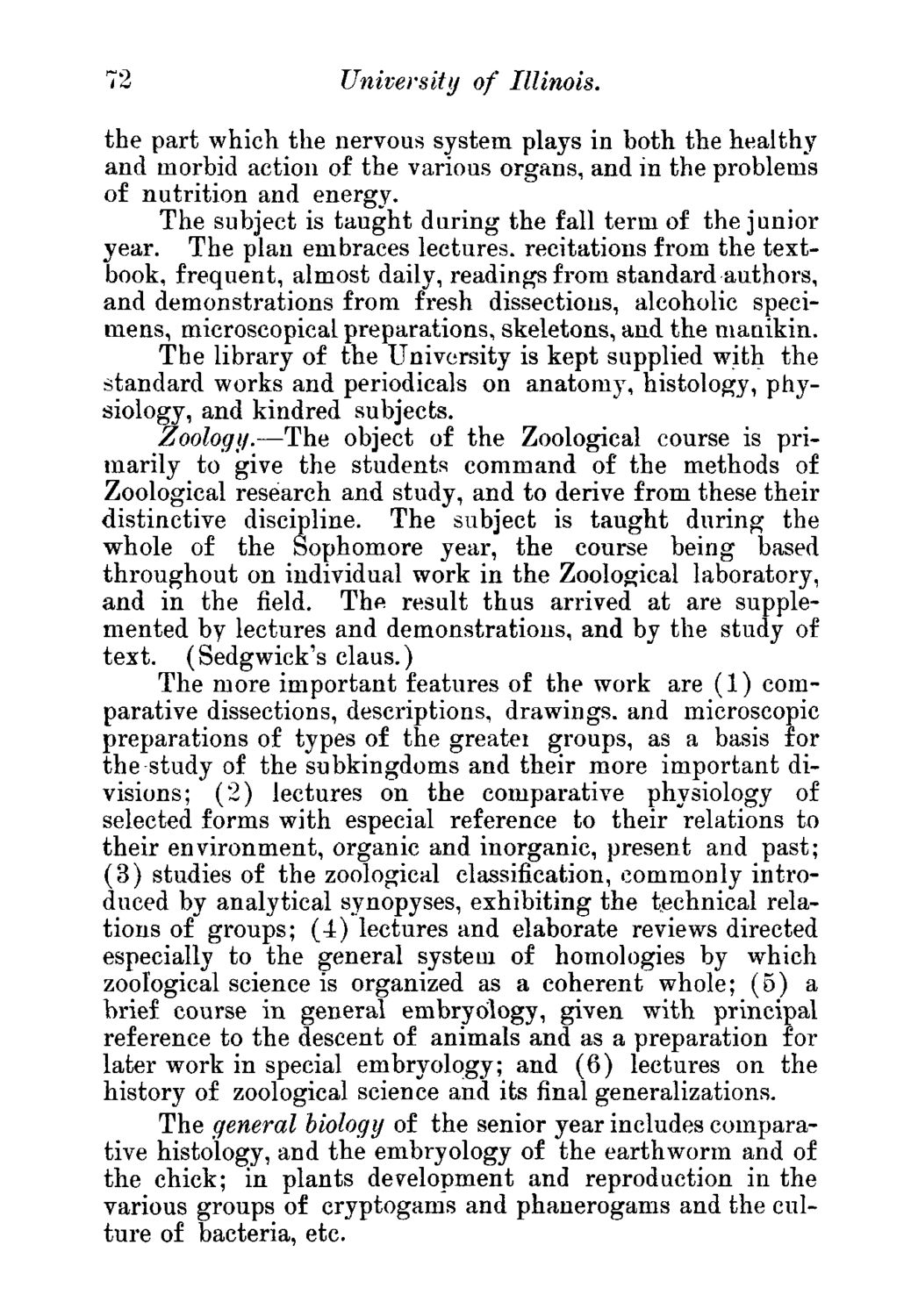| |
| |
Caption: Course Catalog - 1886-1887
This is a reduced-resolution page image for fast online browsing.

EXTRACTED TEXT FROM PAGE:
72 University of Illinois. the part which the nervous system plays in both the healthy and morbid action of the various organs, and in the problems of nutrition and energy. The subject is taught during the fall term of the junior year. The plan embraces lectures, recitations from the textbook, frequent, almost daily, readings from standard authors, and demonstrations from fresh dissections, alcoholic specimens, microscopical preparations, skeletons, and the manikin. The library of the University is kept supplied with the standard works and periodicals on anatomy, histology, physiology, and kindred subjects. Zoology.—The object of the Zoological course is primarily to give the students command of the methods of Zoological research and study, and to derive from these their distinctive discipline. The subject is taught during the whole of the Sophomore year, the course being based throughout on individual work in the Zoological laboratory, and in the field. The result thus arrived at are supplemented by lectures and demonstrations, and by the study of text. (Sedgwick's claus.) The more important features of the work are (1) comparative dissections, descriptions, drawings, and microscopic preparations of types of the greatei groups, as a basis for the study of the subkingdoms and their more important divisions; (2) lectures on the comparative physiology of selected forms with especial reference to their relations to their environment, organic and inorganic, present and past; (3) studies of the zoological classification, commonly introduced by analytical synopyses, exhibiting the technical relations of groups; (4) lectures and elaborate reviews directed especially to the general system of homologies by which zoological science is organized as a coherent whole; (5) a brief course in general embryology, given with principal reference to the descent of animals and as a preparation for later work in special embryology; and (6) lectures on the history of zoological science and its final generalizations. The general biology of the senior year includes comparative histology, and the embryology of the earthworm and of the chick; in plants development and reproduction in the various groups of cryptogams and phanerogams and the culture of bacteria, etc.
| |